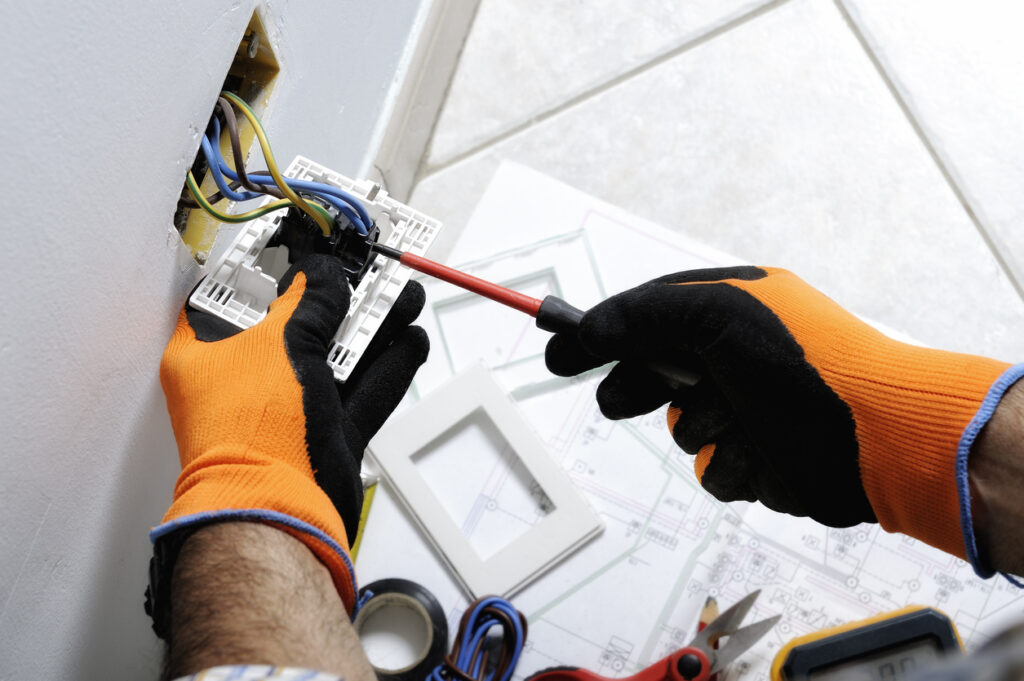Electrostatic discharge (ESD) is a silent but potentially deadly threat to electronic devices and components. In the blink of an eye, a tiny electrostatic spark can render your precious gadgets and delicate circuitry completely useless. Understanding ESD and how to protect against it is vital for anyone involved in electronics. In this article, we will delve into the world of ESD protection, its significance, and various strategies to safeguard your electronics.
Imagine this scenario: you’re working on an intricate electronic project, and you reach for a delicate microchip. As soon as your fingertip makes contact, a small spark jumps, and you hear a faint “zap.” You’ve just witnessed an electrostatic discharge (ESD) event. Although it may not appear significant, these small sparks of static electricity can cause significant damage to sensitive electronics.
What is ESD?
ESD, short for electrostatic discharge, refers to the transfer of electrostatic charge between two objects with different electrical potentials. This transfer can occur when the objects come into contact or are separated, resulting in the creation of a spark. Although these sparks may not be visible to the naked eye, they can carry thousands of volts of electricity. Electrostatic discharge can happen during various everyday activities, such as walking across a carpet, touching a doorknob, or even picking up an electronic component. This is because our bodies accumulate static charge, which is then discharged as a spark when we touch something with a different electrical potential.
The damage caused by Electrostatic Discharge (ESD) is often insidious and cumulative. While a single ESD event might not be immediately noticeable, repeated discharges can degrade electronic components over time. Here are some common ESD damage mechanisms:
- Latch-up – When a parasitic thyristor is activated in an integrated circuit, a low-impedance channel is made between the power source and the ground. This can lead to device failure.
- Gate oxide damage – ESD can puncture the gate oxide of transistors in integrated circuits, rendering them non-functional.
- Dielectric breakdown – ESD can cause the dielectric material in capacitors to degrade, which can modify the capacitance values or cause the capacitor to fail entirely.
- PN junction damage – ESD can cause PN junction damage in transistors and diodes, which can impact their performance and dependability.
- Data corruption – ESD can cause data corruption in memory devices, leading to errors and system crashes.
ESD Protection Measures

Because electrostatic discharge damage is frequently irreversible and can lead to expensive component failures, protection from ESD is essential. Even a slight electrostatic discharge can compromise and cause electronic components that are ESD-sensitive to malfunction. ESD protection is not just a suggested practice for sectors like aerospace, medical devices, automotive, and electronics production; it is a necessary need to adhere to industry standards and regulations.
ESD protection is a multi-faceted approach that involves a combination of strategies, tools, and practices. Some of the key components of effective ESD protection are as follows:
ESD-Safe Workstations
Static electricity build-up is prevented with an ESD-safe workstation. It often has an ESD-dissipative work surface to stop charges from building up on the workbench. To safely discharge any collected charge, these surfaces are connected to the ground.
ESD-Safe Clothing
To reduce the accumulation of static electricity on the body, ESD-safe clothing, such as lab coats and smocks, are worn. These clothes are made of conductive or static-dissipative materials, allowing any static charge to dissipate harmlessly.
ESD-Safe Flooring
Flooring in ESD-sensitive areas should be designed to prevent static build-up. Conductive or dissipative flooring materials help maintain a controlled environment where static charges can be safely discharged through grounding.
ESD Protective Tools
The usage of specialised ESD-safe tools is intended to stop the discharge of static electricity. Handling components and devices that are ESD-sensitive requires the use of tools with conductive or dissipative handles.
Worker ESD Protection Training
It is crucial to train employees in correct ESD-safe handling procedures. This involves keeping things as still as possible, preventing sudden or sliding motions, and making sure that ESD-sensitive components are carried and kept in ESD-safe packaging.
Recommended Products for ESD Protection
Electrostatic discharges are avoided by using a variety of tools and equipment to provide complete ESD protection. Listed below are a few of the most common ESD protection devices:
Heel Grounders
Heel grounders are designed to provide an additional grounding point through the operator’s shoes. They are especially helpful in circumstances where wrist straps by themselves do not offer enough anchoring.

Wrist Straps
Engineers use ESD wrist straps to offer a controlled way for static charge to dissipate. When dealing with ESD-sensitive components, they should be worn because they are often attached to a grounding point.

Gloves
By avoiding direct contact between an operator’s skin and ESD-sensitive components, ESD gloves give an extra layer of protection. Usually composed of materials that dissipate static electricity, these gloves are tailored to suit the hands comfortably.

Earthing Mats
ESD earthing mats and benches have conductive or dissipative surfaces that prevent static build-up. These surfaces are grounded and provide a safe working area for handling ESD-sensitive components.

Packaging
ESD-sensitive components must be stored and transported in ESD-safe packaging to protect them from electrostatic discharge. These packages are designed to dissipate any charge that may accumulate on the packaging.

Conclusion
Anyone dealing with electronic devices and components must use ESD protection; it is not an option. Adequate ESD protection measures must be put in place to avoid costly component failures, data loss, and safety issues. You can assure the reliability and endurance of your electronic assets by understanding ESD, its potential effects, and the significance of protection measures. Protecting electronics against the unseen danger of electrostatic discharge is a crucial procedure that needs to be integrated into every step of producing and handling electronics.











